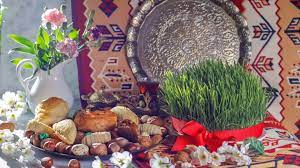NAVRUZ IS A HOLIDAY OF THE PEOPLE AND A SYMBOL OF PEACE AND UNITY
According to historical, literary and cultural sources, the origin of Navruz dates back to the time of King Jamshed, and for five and a half thousand years it has been celebrated as a sacred day and a holiday of joy and happiness. Navruz, as a light substance and a symbol of the eternal civilization of peoples, has always been the guardian of the people, language, customs, culture, history and, finally, the homeland. Therefore, Navruz is a very blessed holiday and is celebrated in the month of Farvardin, which means pure, clean and holy. Navruz has experienced many victories and defeats in its millennial history, as a symbol of freedom with its vitality until today, when the sun enters the constellation of Hamal from the tower of Hata and the spring day of confidence comes with the names of a new holiday, a new day, the beginning of a new year, rebirth. Nature and the awakening of the earth is celebrated from the outskirts of Varorud to the Persian Gulf.
Since 2010, on the proposal of the President of the Republic of Tajikistan honorable Emomali Rahmon and with the support of a number of countries around the world, Navruz has been recognized by the UN General Assembly as an international holiday, which is celebrated today with great splendor around the world. The adoption of Navruz as a world holiday can be interpreted as one of the important achievements of the period of independence of the Republic of Tajikistan.
During Navruz, Tajiks prepare various dishes and drinks and put them on the festive table. They often prepare special spring dishes, which are made from tasty herbs and grain amvo. In most areas of Tajikistan, the traditional dishes of Navruz are prepared from milled wheat, peas, beans and some tasty herbs, but not everywhere they are called the same. For example, "Dalda" is used in Kulyab, "Kashk" in Yagnob, and "Boy" in Badakhshan. Sumanak is a type of Navruz salad, which is made from wheat sprouts. Greening itself is a way of reviving nature, health, beauty and peace of life.
In past centuries, residents of Hisar, Qaratogh, Istaravshan and Khujand, Samarqand, and Bukhoro used to break broken cups, plates, pots, and other utensils. This meant that all the misfortunes of life would go irrevocably with the old year, and thus people wished them health and an indestructible life in the new year.
Navruz, as a shining shell and a stable symbol of civilizations, is always a protection of the nation, language, customs, culture and history. It is a source of pride that Navruz has been revived in a new light in the era of the independence of the homeland and has become an invaluable value of mankind. Navruz is seen as a factor of strengthening national identity and uniting different nations and peoples of the world. It is from here that the noble people of the country, relying on centuries of wisdom, originality of creativity and creative identity, make confident steps towards a bright future for our dear Motherland - the Republic of Tajikistan.
Valiev Davlatyor
journalist of the Rector’s Service
translated
Ruzimuhammad Ismoilov

